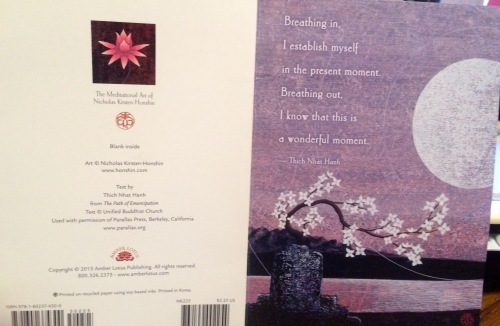Concentration is Consecration.
Eknath Easwaran
In Thich Nhat Hanh’s 1993 revised edition of the Tiep Hien precepts, the 7th reads, in part, as follows: “Be in touch with what is wondrous, refreshing, and healing both inside and around you.” In Ten Breaths to Happiness, Berkeley meditation teacher Glen Schneider offers us the fruit of his own practice so that we may deepen our contact with the wonderful elements of our lives.
Schneider’s practice is to stop, notice something beautiful, and to be fully present to it through ten mindful breaths. He refers to recent science that it takes half a minute to stimulate new neural pathways in the brain. This research and spiritual practice reinforce each other when it comes to cultivating new habit energies. He makes this enticing claim, “If you can resolve to use the Ten Breaths practice to encounter something positive at least once a day for twenty-one days, you will be on the right track.”
The practice of Ten Breaths can be done anytime, anywhere, once a day, or several times. Ten Breaths are really a clever way to experience gratitude, serenity, and joy.
This week I’ve enjoyed doing Ten Breaths while regarding Dharma sisters, listening to Glenn Gould’s 1981 recording of the 1st Goldberg Variation*, and standing on top of Art Hill and taking in a view of Forest Park.
Schneider’s book could be summarized by the oft-quoted passage from Rumi: “Let the beauty we love be what we do. There are hundreds of ways to kneel and kiss the ground.”
The Sangha can experiment with this practice and and verify if there are indeed hundreds of ways of knowing happiness through conscious breathing.
* Gould asserted, “The purpose of art is not the release of a momentary ejection of adrenaline but rather the gradual, lifelong construction of a state of wonder and serenity.”
Sources
Eknath Easwaran, Meditation: An Eight Point Program (Nilgiri, 1991).
Malcolm Lester, Glenn Gould: A Life in Pictures (Firefly, 2007).
Glen Schneider, Ten Breaths to Happiness: Touching Life in Its Fullness (Parallax, 2014).
Thich Nhat Hanh, Interbeing: Fourteen Guidelines from Engaged Buddhism (Parallax, 1993).
